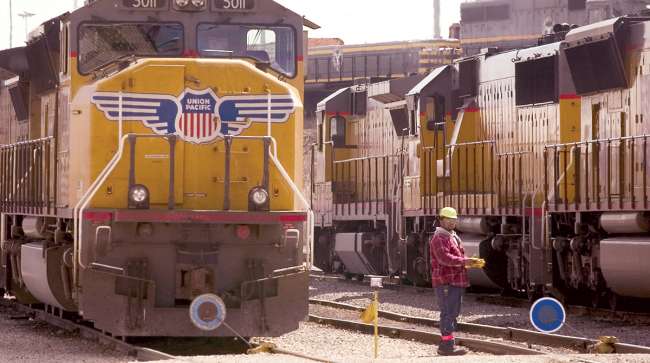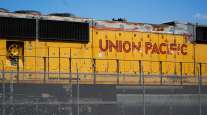Senior Reporter
COVID-19 Pandemic Impacts Q4 Earnings at Union Pacific

[Stay on top of transportation news: Get TTNews in your inbox.]
Union Pacific saw its fourth-quarter and full-year results decline versus year-ago levels, but the Class I rail carrier said its implementation of precision scheduled railroading is reaping benefits for its operations.
The company’s Q4 net income fell 2% to $1.38 billion, or $2.05 a share, compared with $1.4 billion ($2.03) in Q4 2019. Quarterly revenue fell 1% to $5.14 billion, compared with $5.21 billion in 2019.
Full-year earnings dropped 10% to $5.34 billion ($7.90), compared with $5.91 billion ($8.41) a year ago, as revenue slumped 10% to $19.5 billion, compared with $21.7 billion in 2019.
The Omaha, Neb.-based company’s quarterly operating ratio worsened slightly in the last three months of 2020 to 61.0 from 59.7 a year ago. But, for the entire year, the ratio improved to 59.9 from 60.6.
Operating ratio, or operating expenses as a percentage of revenue, is used to measure efficiency. The lower the ratio, the higher the company’s ability to generate profit.

Gehringer
“This past year presented quite the challenge to the operating team,” said Eric Gehringer, the company’s executive vice president for operations. “The drastic fall-off in volume in April, followed by the rapid recovery in July, required agility, as we shut down portions of our operations and then reopen them, all while staying focused on keeping our employees safe and healthy.”
Union Pacific is one of several Class I railroads that have moved to boost efficiency through PSR, which prioritizes moving freight with fewer railcars and locomotives and a simplified system across the network that relies on longer trains with fewer employees.
The company said it has realized Q4 cost saving as a result of the changes, as benefit costs declined 3% to $1.02 billion, compared with $1.05 billion a year ago. For the year, compensation spending dropped 12% to $3.9 billion, compared with $4.5 billion in 2019.
The railroad’s employee headcount for Q4 dropped by 14% to 29,753, compared with 34,563 last year. For the entire year, the number of employees declined 17% to 30,966, compared with 37,483 in 2019.

Sustainable trucking is here. In this episode, we'll talk to two major players in the transportation technology sector that are helping fleets move closer to total supply chain sustainability. Hear a snippet, above, and get the full program by going to RoadSigns.TTNews.com.
Union Pacific also cut Q4 diesel fuel costs by 35% to $332 million, compared with $512 million in the same period last year. For 2020, its fuel costs dropped 38% to $1.31 billion, compared with $2.10 billion in 2019.
“Compared to the fourth quarter of 2018, when we first began implementing precision scheduled railroading, we have increased train length across our system by 30% or 2,100 feet to approximately 9,150 feet in the fourth quarter of 2020,” Gehringer said. Union Pacific reported mixed Q4 revenue numbers across business segments.
Revenue from transportation of coal and renewable products dropped 21% to $357 million, compared with $451 million a year ago, while its energy and specialized items business saw revenue decline 18% to $515 million compared with $626 million last year. Metals and minerals business fell 12% to $378 million, compared with $429 million in 2019. Revenue from the delivery of autos by rail during Q4 fell 4% to $486 million from $507 million. Intermodal cargo revenue jumped 9% to nearly $1.1 billion in Q4 from $1 billion a year ago
“The women and men of Union Pacific worked hard in the face of the pandemic to provide our customers with fluid and uninterrupted service,” CEO Lance Fritz said on a conference call with reporters and financial analysts. “Their dedication produced service and efficiency improvements that are now part of the UP DNA, positioning our company to flourish in the days ahead.”
Want more news? Listen to today's daily briefing:
Subscribe: Apple Podcasts | Spotify | Amazon Alexa | Google Assistant | More


